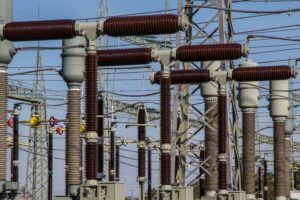Summary:
The declining cost of Renewable Energy (RE) has made it more competitive than thermal power in India. This is disrupting the thermal power ecosystem. Some segments will benefit while others will face difficult choices.
Renewable Energy (RE) Costs
Over most of the last decade, the cost of RE was far higher than coal-based thermal power in India. Many felt that without generous subsidies, RE would remain nonviable. However, the cost of solar cells and wind turbines kept reducing over the years steadily narrowing the viability gap. Price parity, without subsidies, was finally achieved around 2017. In the giant 1,200 MW Bhadla solar park auction in Rajasthan held in 2018, the winning bid was just Rs 2.44 per kWh. Since then, large solar and wind projects were awarded at a tariff of Rs 2.5 to Rs 2.7 per kWh- much lower than greenfield thermal power.


A major breakthrough announced in early 2020 was the auction for 400 MW of solar power, including storage. It was won by ReNew Power with a levelised tariff of Rs 3.52 per KWH over 15 years. The equivalent thermal power tariff would have been over Rs 4 per kWh. ReNew Power will be using lithium-ion storage batteries to store excess power during the day and releasing it later to meet its capacity utilization target of 80%. Future auctions will show whether this price level will be sustained.
After crossing the point of cost parity with coal-based thermal generation in 2017, the share of RE has risen to over 60% of new power capacity added each year in India. In 2018, out of 17.6 GW capacity added in India, 74% was based on RE technologies. The Chart below shows the rising share of RE in new capacity addition over the 2016 to 2019 period (Source- Govt of India).
(Legend: Coal % Wind% Solar % Total RE %)
India has over 370 GW of installed generation capacity of which 62% is thermal. But peak demand currently is only around 185 GW. So, there is a huge overhang of thermal capacity. Thermal capacity being added now represents the completion of projects started several years ago.
Future RE Capacity Outlook
The Government of India had set a target of 175 GW of renewable capacity by 2022 with 100 GW being solar. The Union Minister for Power, Mr. R K Singh in a recent interview (Business Today Sept 6, 2020) has stated that India already has 88 GW of RE capacity and another 45 GW is under installation making a total of 133GW. Capacity addition of about 30 GW is in the process of bidding. So, the target of 175 GW, which looked unachievable when first announced, is within sight. He further stated that for any new thermal plant the cost of power will be around Rs 4 per kWh. Hence no new thermal units should be planned henceforth. None is likely to be set up in the private sector- except for spill-overs of projects initiated over the last several years.
Latest Solar Bids
Solar tariffs hit a new low of Rs 2 per kWh in fresh bids (from Sembcorp and Saudi Arabia based Aljomaih Energy) received in November 2020. The next highest bid of Rs 2.01 per kWh was from NTPC. Even while observers were wondering if these tariffs were sustainable, the results of the latest auction in December 2020 have been announced. Solar power tariff has dropped to Rs 1.99 per KWH with NTPC, Torrent Power, and Aljomaih Energy – all credible players – being the joint winners.
This constitutes a fresh cost benchmark- almost half that of new thermal power cost- without any subsidies.
Implications for India’s Power Ecosystem
Till a few years ago, the thermal power sector was the single largest recipient of investment in India and accounted for about 62% of the country’s total power generation capacity. Clearly, it faces a disruption owing to the swing in favour of RE which is here to stay – even if the RE capacity addition targets get extended owing to delays in 2020. This has implications for all segments of this sector as summarized below:


Coal mining:
About 64% of the coal consumed in India is for power generation. With RE dominating new power generation capacity addition, the growth rate of coal consumption can be expected to taper off in the coming years. As old, nonviable thermal generation capacity gets retired, coal consumption will start declining. In America and Europe, coal consumption has dropped by 34% since 2009. For India, the data for the last few years shown in the Chart below ( Source- Enerdata) suggests that this decline may have already started.
This trend will adversely affect coal mining firms (e.g., Coal India), mining communities, and people working in the coal sector. There are reports of coal mines being abandoned in parts of Jharkhand – e.g. in Bokaro and Ramgarh districts. Many coal mines in operation are unprofitable. A ‘Just Transition’ policy, part of the Paris Climate Agreement, for planned phasing out of mines and redeployment of large numbers of workers will be required.
Coal mining companies will have to seek fresh growth avenues. One option is the mining of other minerals. They can also become energy producers using their land holdings for RE generation. Coal India has recently announced plans to become a net-zero energy company by 2023-24 by setting up 3 GW solar power to meet its energy needs. It also intends to diversify beyond coal into Aluminium and Solar energy supply chain.
Thermal Power generation equipment:
There is already a drought of new orders. As pending orders get executed, firms will have to use their product engineering and manufacturing expertise to diversify into new fields. At the same time, stranded capacities may have to be retired. This is already reflected in the fortunes of firms like BHEL and GE Power.
EPC and Specialized Contractors:
Firms like L&T will have to redeploy their skills and expertise in other sectors. The Government has unveiled an investment pipeline of around Rs 20 Trillion over the next few years. This will throw up new opportunities for such firms in growth sectors like expressways, bullet trains, urban development, airports, and RE projects.
Thermal Generating Companies (Gencos):
With excess generating capacity in India and lower cost RE capacity being added, existing thermal Gencos will face stress from underutilized assets and declining Power Load Factor (PLF) which has recently touched a low of 50%. They will have to review whether to continue with incomplete thermal projects and consider retiring aging plants having high generating costs. Beyond that, their future growth is likely to be in RE. Many of them e.g., NTPC, Tata Power, and Adani are actively adding to their RE portfolio.
Banks and other Lenders:
Indian lenders are already saddled with a huge amount of stressed and non-performing assets (NPAs) from the power sector. Going forward, as lower cost RE capacity gets added on a growing scale, many Gencos will have to retire stranded or nonviable thermal capacities and restructure their debts. Lenders may have to brace for a further wave of NPAs.


Distribution Cos (Discoms):
The demand and pricing conditions for Discoms will remain largely unchanged. Their existing challenges like subsidized tariffs, T&D (Transmission and Distribution) losses, and operating deficits have to be addressed by State Governments. Further, they will have a growing share of RE in the grid with large fluctuations in generation. Discoms will have to upgrade their transmission & distribution systems and adopt smart grid management practices.
RE Gencos:
With more RE capacities being tendered each year, this segment faces rapid growth with declining equipment costs. Firms like Adani Green and NextEra (USA) focused on this segment are already attracting investor interest. Future RE auctions are likely to include storage which will become more competitive as Li-Ion battery costs keep declining.
Solar/Wind Power Equipment:
This segment presents an attractive opportunity with growing demand along with a steady decline in costs. Solar cells and other components are still largely imported from China. Domestic suppliers of equipment need to keep up with the latest technology and pursue local manufacturing taking full advantage of Government policy and incentives to become competitive.
Looking Ahead
India’s power ecosystem is undergoing a transformation driven by the increasing cost-competitiveness of RE. These trends will further accelerate once India makes more commitments to counter Climate Change and energy storage becomes more cost-competitive.
There are segments in the power sector that are benefitting and enjoying growth. Others are under stress and some will have to make painful exit decisions. All firms will have to assess where they stand and make appropriate strategic choices. Employees and investors too need to monitor the disruption that is underway and take timely steps to protect their interests.

has anybody done a study on effect of lithium batteries on the environment as also that of the non recyclable content of electronics that goes to control it. i was looking at a similar issue related to Recovery of Gallium in LEDs and gave up because there was not much material i could access.
Not aware of any such study. The entire issue of E-Waste is becoming bigger with time. Shall inform you if I run into anything.
We have gradually moved from consumption of fossil fuel i.e. solar energy trapped by vegetation and animal life thousands of years ago to capturing solar energy before it reaches the surface of the earth. I could not find any study on the impact on nature due to our approach of harnessing solar energy before it can be absorbed by life on the surface. While many of us are go ga-ga over the benefits of renewable energy, we need to reflect on potential future impact of our desire to harness natural sources of energy before they play out in the normal course.
This article is quite though provoking and exemplifies the tremendous impact of technology on traditional economic activity.